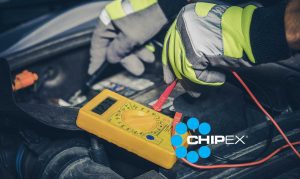Your car is a big purchase, and you want to do everything possible to keep it running and in good condition. But sometimes, you can lose track of the basic maintenance that keeps your car humming. In this article, we’ve outlined the ten most important car maintenance practices that will keep your car on the road for years and years.

Check and Change Oil
Oil keeps your engine running at peak operation. You might consider oil the “life blood’ of your vehicle, which is why it’s crucial that you check and change your oil on a regular basis.
Checking your oil ensures your engine has enough oil and that the oil itself is in good condition. We recommend checking your oil at every other fuel fill-up to ensure you’ve got plenty in the tank.
Changing your oil takes a little more work—or a trip to your auto care shop. The type of oil your car uses will determine how often you need to change it. In the past, you had your oil changed every 3,000 miles. These days, most oil change intervals vary from 5,000 to 7,5000 miles. Consult your mechanic or local oil change shop if you have questions about an ideal oil change schedule for your vehicle.
Refill Wiper Fluid
Most drivers don’t realize they need windshield wiper fluid until they try to clean their windshield and find that they’re out! Topping off your wiper fluid is a basic car maintenance practice that you’ll be glad you did when you’re driving with a dirty windshield.
You can find jugs of wiper fluid at any automotive store. Simply pop your hood, find the wiper fluid container, and, using a funnel, pour the fluid until it reaches the fill line. Refilling your windshield wiper fluid ensures you’ll be able to drive safely and with a clean windshield.
Check Tire Pressure
Regularly checking your tire pressure not only allows you to get the most miles out of your tires, but it keeps you and your passengers safe.
Your tires can potentially lose one PSI of pressure each month. Checking them with a pressure gauge every other month helps you stay on top of pressure loss and fill your tires as soon as they need it.
Tires with low pressure are more likely to get a flat or even a blowout than tires inflated to the recommended PSI. By regularly checking your tire pressure, you’ll keep your car running smoothly and safely.
Top Off Brake Fluid
Today’s cars operate with a hydraulic braking system. These systems require minimal maintenance and offer reliability that older brake systems don’t. But because they use hydraulic fluids, you need to make sure they have plenty of brake fluid to work effectively.
If your brake fluid is low or if you’ve recently made a repair to the braking system, top off your brake fluid. This simple act keeps the system operating smoothly and will help keep your entire car in good shape.
Keep Your Car Clean
Washing your car helps maintain the integrity of your vehicle’s paint job. When dirt, grime, salt, and other debris stay on your car for too long, they can scratch and break down the clear coat. This exposes your car to permanent scratches and even rust damage.
When you wash your car, you remove factors that contribute to significant paint damage. A clean car is a car that will last. A thorough wash every month or so should be enough to do the trick.
Replace Air Filter
Like most things that are “out of sight, out of mind,” air filter maintenance is often neglected. In fact, many car owners forget they have an air filter that needs changing until their mechanic brings it up during an inspection. Replacing dirty air filters is an essential maintenance practice that keeps your car humming.
Air filters do exactly what they say: they filter the air that goes into your engine. And when they get dirty, you’ll begin to experience all kids of problems. But keeping a clean air filter in your car works wonders for your car’s lifespan.
Replacing your air filter will increase your car’s fuel efficiency, reduce your emissions, and will ultimately prolong your engine life. This is a basic maintenance practice that you don’t want to forget!
Rotate Tires
Tire rotation brings the back set of tires to the front of the car and sends the front set to the rear of your vehicle. This can be done every other oil change and plays a significant role in the overall function of your vehicle.
Rotating your tires evenly distributes the work between your front and back sets of tires (the front set bears the brunt of accelerating and braking.) Having a regular rotation schedule ensures your tires wear at the same rate, keeping your car running smoothly with no surprise flats or blowouts.
Replace Timing Belt
Your car’s timing belt functions like a bike chain. It keeps all parts of the engine working together and on time. But timing belts are made of rubber, and over time, they break or need replacing.
You should replace your timing belt every 60,000 to 100,000 miles. Your car’s owner’s manual will give you the recommended interval for your vehicle. Maintaining a strong timing belt ensures your engine runs as it should.
Drive Responsibly
How you drive is just as important as what you’re driving. Maintaining appropriate speed, reasonable braking and accelerating, and staying alert on the road helps you extend the life of your vehicle.
Over time, rough driving practices wear down your car’s components. Responsible and safe driving keeps your car on the road for a long, long time.
Have Your Car Inspected
The final maintenance tip to keep your car in great shape is to have it inspected. You can do all the above maintenance practices—plus more—and your car might still have an issue. Bringing your vehicle in for an inspection every year allows your mechanic to find problems and make repairs before you find yourself in serious car trouble.
Conclusion
Keeping your car is top shape takes planning and consistency, but basic car maintenance is simple. By regularly performing these ten basic maintenance tasks, you’ll get a lot of life and a lot of miles out of your car!
Search your car brand
brands

Can’t find your color code? enter your details manually here


















































































